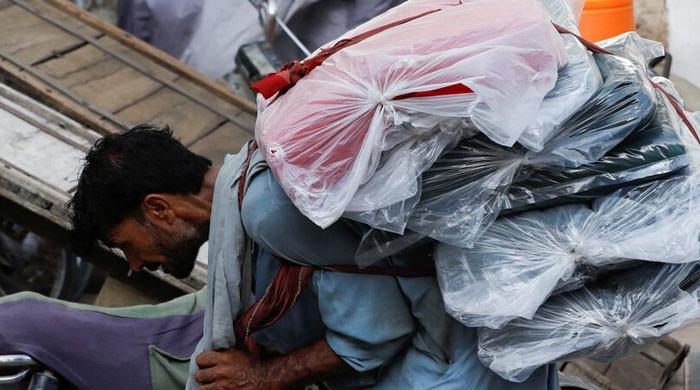The Pakistan 2024-25 economic survey and the 2025-26 budget indicate that, although the current government has managed to stabilize the economy, it is far from being the objective of a sustainable economic growth rate that would reduce the levels of poverty and unemployment and place the country in the fast path to economic prosperity.
It seems that high -level government officials are inadequately aware of the previous requirements of a high sustainable economic growth rate and the improvement of the economic well -being of the common citizen.
Pakistan’s success by gaining the advantage in recent military skirmishes with India was reassuring to the extent that he established the credibility of Pakistan’s security dissuasive.
But it also entails the risk that Pakistan’s policy leaders and policy formulators ignore the long -term security demands of Pakistan, which is based on the economic and technological strength and the scientific progress more than anything else.
The 2024-25 economic survey highlights government achievements to stabilize the economy, while revealing its failure to substantially accelerate the economic growth rate, reduce poverty and unemployment and improve the development of education and health sectors.
The current government can take some legitimate credit for stabilizing the economy by gradually converting an unsustainably high level of current account deficit estimated at 4.7% of GDP ($ 17 billion) in 2021-22 to an estimated surplus at $ 1.9 billion in the first ten months of the current fiscal year.
In the same way, it is a matter of considerable satisfaction that the consumer price index or the inflation rate has decreased abruptly from 29.2% in 2022-23 to 4.7% in the July-April period of 2024-25.
But beyond the previous positive indicators, the government’s economic performance has left much to be desired.
The GDP growth rate remained unfortunately drops by 2.7% in the first ten months of the current fiscal year, not enough to improve people’s living conditions, relieve poverty or provide employment to new participants in the labor market.
The national health expenditure was unfortunately under 0.9% of GDP in 2023-24 and it is likely to remain at the same level low in the current fiscal year.
Even more disappointing was the low national expense in education, which was estimated at only 0.8% of GDP in the first ten months of 2024-25 compared to UNESCO’s recommendation that this expense should be at least 4.0% of GDP.
The low level of expense in education shows that most of our young people, when they enter the labor market, would be illiterate or semi-alfabetized against the challenges of the modern world based on knowledge, where progress in science and technology is an indispensable condition for progress.
The budget for 2025-26 with a modest GDP growth of 4.2% compared to 2.7% in the outgoing fiscal year reflects the continuous approach of the government in fiscal discipline and economic stability compared to the need for a high growth rate of the economy, which is an essential prerequisite for population relief and the decrease in implementation of the implementation.
The Government, therefore, remains far from the ideal combination of a high growth rate of GDP greater than 6-7% annual and a stable economic environment marked by a balanced budget, current account surplus and low inflation rate. This is mainly due to the fact that the government has failed so much in achieving the structural reforms necessary to achieve these objectives.
With regard to the issue of fiscal balance, the fundamental problem is the low level of relationship imposed on GDP in Pakistan, which does not provide enough resources to the government to meet its current current and development requirements. During the outgoing fiscal year, the relationship imposed on GDP is expected to be around 8.0% despite the high statements of the Government about the reforms it introduced to rationalize and improve the tax system.
Going through the past performance of the FBR, it is unlikely that the relationship imposed on GDP for 2025-26 exceeds 10%. It is worth remembering that the average tax relationship in GDP in developing countries is estimated at approximately 15% and ideally, it must be greater than 20% in our case.
Our unsatisfactory performance in tax collection is the main reason for our perennial levels of fiscal deficits and our inability to finance large development projects through government resources instead of depending on national and external loans. The first extends national loans to the private sector, and the second increases the burden of external debt.
The only way to reverse this unfortunate situation is to expand the tax base to adequately cover the income obtained in the agricultural sector, real estate and retail trade, in addition to drastically reducing the tax exemptions granted to several elite kinds in the country. This must be combined with an impulse of austerity to reduce the current government expenditure. The 2025-26 budget unfortunately does not go far enough in this address.
Our national savings rate, which is estimated at approximately 14%of GDP in 2024-25, is much lower than comparable national savings rates in India (approximately 30%) and Bangladesh (approximately 34%). A high national savings rate allows a country to finance a high national investment rate through national resources, thus achieving a high GDP growth rate without having to depend on foreign loans or investments.
Our low national investment rate, estimated at approximately 13.8%, explains the low GDP growth rate in the outgoing fiscal year. Morality is that if we want to accelerate our GDP growth rate to a level above 6.0%, we will have to raise our national investment rate to more than 25% of GDP, assuming a capital-sauce ratio of 4 to 1.
In addition, if we do not want to trust excessively on abroad loans to finance this high level of investment, we must also increase our 25% national GDP savings rate or even more. The main culprit that prevents us from achieving the high level of national savings is the addiction of the Pakistani ruling elite to conspicuous life.
The budget does not contain any initiative that is worth it to move the country in the desired direction by substantially increasing our national savings rate.
The federal budget in its current form is an epitome of mediocrity and manifests all the evils of elite capture. It delays the unfortunate ignorance of the main drivers of economic progress in the modern world based on knowledge. The looting and looting of the nation’s resources continue through continuous conspicuous consumption, undeserved tax exemptions and other privileges.
It provides little relief to the poor and the oppressed through a rapid increase in the growth rate of GDP, poverty relief and the improvement of employment opportunities.
Do not take the necessary economic initiatives to increase GDP growth rate quickly and sustainably and accelerate scientific and technological advance in the country also endangers Pakistan’s long -term safety.
The writer is a retired ambassador and author of ‘Pakistan and a world in disorder, a great strategy for the 21st century’. You can contact: [email protected]
Discharge of responsibility: The views expressed in this piece are those of the writer and do not necessarily reflect the Editorial Policy of PakGazette.TV
Originally published in the news




